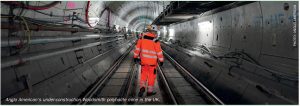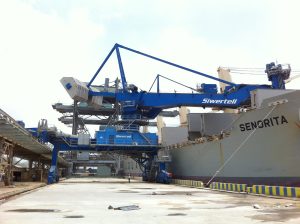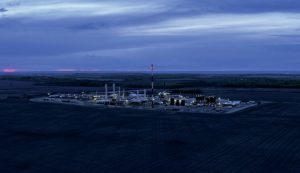
Anglo American announces merger of equals with Teck
Anglo American and Teck Resources jointly announced a merger agreement on 9th September.

Anglo American and Teck Resources jointly announced a merger agreement on 9th September.

Price trends and market outlook, 23rd October 2025

Could demand mandates help the build the market for green fertilizers – by placing mandatory purchasing requirements on large-scale end users?

From ship to storage, Bruks Siwertell aims to ensure safe, reliable, high-capacity fertilizer transfers.

The Indonesian government has moved to limit new licenses for nickel projects in an attempt to correct overdevelopment of the industry and the subsequent crash in global nickel prices. The permit restriction applies to new nickel processing companies that produce intermediate products, both with pyrometallurgical (RKEF) and hydrometallurgical (HPAL) technologies. Currently, Indonesia already has 54 nickel processing plants operating, 38 in the construction stage, and 45 are still under planning.

While sulphuric acid production is dominated by sulphur burning or metallurgical acid routes, pyrite roasting remains a niche sector, particularly in China.

Ardea Resources says that its Kalgoorlie Nickel Project in Western Australia has secured a crucial renewal of its major project status from the federal government for another three years, underscoring the project’s strategic importance, granting it streamlined approvals and direct access to the country’s major project facilitation agency. Located 80 km from Kalgoorlie, the project hosts what Ardea says is the world’s largest undeveloped nickel-cobalt resource, containing 854 million tonnes averaging 0.71% (6.1 million tonnes) of nickel and 0.045% (386,000 tonnes) of cobalt.

CSV Midstream Solutions says that it has successfully completed commissioning and commenced operations at its Albright gas plant in northern Alberta, tapping into the Montney shale gas field. The new 150 million scf/d sour gas plant with associated sulphur recovery represents the first of its kind to be built in Alberta in more than a generation.

Ukraine has mounted several strikes on the Russian Black Sea port of Tuapse, hitting oil infrastructure with airborne and seagoing drones and missiles. Tuapse is a tanker loading terminal, one of two main oil export facilities on Russia’s Black Sea coast, with the capacity to transship around 17 million t/a of oil products. A raid on November 2nd reportedly damaged two tankers, halted fuel exports and refinery operations for days, caused an oil spill and forced tankers to abandon the port. Russia’s national rail company has halted rail shipments to Tuapse port, citing insufficient train car handling capacity.

First gas from Abu Dhabi’s 1.5 billion cfd Ghasha sour gas concession will be reached in early 2026, according to project partner PTTEP. The gas will come from the first phase 340 million cfd Dalma development. The Ghasha project is being developed by ADNOC (70%), Eni (10%), Thailand’s PTTEP (10%) and Russia’s Lukoil (10%). The outlook, published in PTTEP’s Q3 results, is a more cautious assessment than that provided by Eni in its own Q3 results. Eni said it was optimistic that the development would start up by the end of 2025.